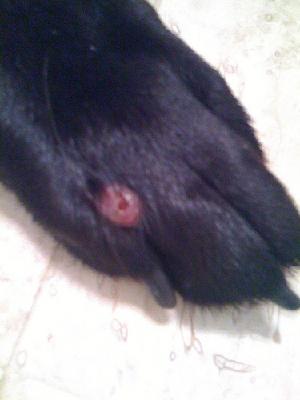QuestionXmas eve we took one of our 2 border collies to emer. vet. Started with puffiness around an eye,switched to the other eye, then her very slim muzzel got bumpy then wide and bumpy. She was doing some sneezing and itching. Playful as usual and no trouble bteathing. Vet gave steroid,prednizone and benedril. Now, 4 weeks later, we just noticed one little warty spot inside flap of each ear and maybe some just inside one lip. We searched last time for cause (they"ve stay in our shop while we work for months. It has doggy door to a grassy run). All we could find was insulation maybe pushed by the muzzle shape like she went after a mouse diving into the insulation. WE removed insulation (had seem one mouse 2 days earlier). Maybe there is something in the woodpile out back, vet couldn't figure it out either. Help!
Answer
Hi Donna,
It sounds like your dog had an allergic reaction to something, back around xmas time. You should ask your vet what correct dose of Benedril is to give your dog, and always have some on hand. Should she have another bad reaction, it could be a life saver.
There's really no way to guess at what a dog might be allergic to. It can be anything from grasses or plants the dog comes in contact with, to the kind of detergent or carpet cleaner you use, or 1000 things in between. The way to find out what your dog is allergic to is to have the vet do an allergy test. There are two basic types of allergy testing. The most common is a blood test that checks for antigen-induced antibodies in the dog's blood. There are two standard tests that are used to test the blood. The first is called a RAST test (radioallergosorbent). The other is an ELISA test (enzyme-linked immunosorbent assay). Both of these tests are very similar, but many practitioners feel that the ELISA test gives more accurate results than the RAST test.
The other type of testing is intradermal skin testing. In this test, a small amount of antigen is injected into the skin of the animal and after a short period of time, the area around the injection site is observed to determine if the animal is allergic to the agent.
To become proficient at allergy testing, a veterinarian must do it frequently. If your vet doesn't do a lot of allergy testing, you should ask for a recommendation to have your dog seen by a veterinary dermatologist, or travel to a larger metropolitan area to find a veterinarian that will correctly perform the required testing and then follow up with the hyposensitization.
Best of luck,
Patti

 Shaving a Pomeranian
Question
Brandy my Pomeranian!
I have a few ques
Shaving a Pomeranian
Question
Brandy my Pomeranian!
I have a few ques
 Live worms came out in my dogs poop and he has some rashes?
Question
The Rashes
She is 15 months old and is
Live worms came out in my dogs poop and he has some rashes?
Question
The Rashes
She is 15 months old and is
 mouthing; pawing, wont drop it
Question
My puppy Trigger
I have a 10 month old LARGE (
mouthing; pawing, wont drop it
Question
My puppy Trigger
I have a 10 month old LARGE (
 Redish bump between dogs toes
QuestionHello I have a three year old Australian Shephe
Redish bump between dogs toes
QuestionHello I have a three year old Australian Shephe
 Dry Dog Foods
Question
Prince Duke & Princess
I have two B
Dry Dog Foods
Question
Prince Duke & Princess
I have two B